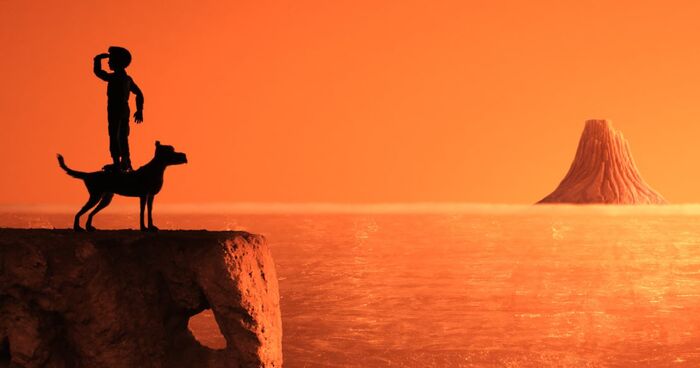Ready Player One review: ‘the materiality of the virtual’
Reflecting on the realities of Steven Spielberg’s blockbuster smash, Alexander Taylor finds the film could have explored more ground

Steven Spielberg’s Ready Player One takes viewers into a digital future of ubiquitous Virtual Reality (VR). It is 2045 and to escape the post-peak oil world where catastrophic climate change and overpopulation have led to mass poverty, people spend most of their time logged in to the OASIS, an immersive VR network of simulated worlds.
Based on Ernest Cline’s 2011 novel of the same name, the film follows Tye Sheridan’s Wade Watts as he hunts for an Easter-egg hidden in the platform by its late inventor, James Halliday. The egg will give whoever finds it complete ownership of the trillion-dollar metaverse. Much of the action therefore takes place in the simulation itself. The VR world setting eliminates the requirements for photorealism and provides Spielberg with a cinematic sandbox for CGI spectacle. Huge multiplayer battles take place against the digitally-rendered futurescapes of crumbling cities, floating discos and dead planets.
"A vacuous vomitorium of pop culture iconolatry"
Envelope-pushing CGI sequences provide viewers with a visceral first-person perspective of destruction derbies as King Kong and Spielberg’s digitally-resurrected T-Rex pwn racers who get in their way - and these are just some of the intellectual property remediated for the film. The OASIS is teeming with familiar mediatised icons of popular culture. The only limit to imagination in this open-source ‘online utopia’ of user-generated content, it seems, is trademark law. As such, Ready Player One is a Baudrillardian soup of simulacra. The fact that Back to the Future composer Alan Silvestri scored the film and Spielberg directed it (whose back catalogue partly inspired the original book), adds another layer of intriguing hyperreal complexity.
Despite the lingering shadow of the Gamergate controversy that led to an aggressive reappraisal of Cline’s novel, by restructuring the original storyline and replacing the obscure 1980s pop culture references that saturated the book (and came to be interpreted on a scale ranging from nostalgic narcissism to toxic nerdism) with more mainstream references, the film avoids the accusations of cultural gatekeeping that were levelled at its source material. If intertextual reference-spotting is your thing then this film is a must see. It seems to mark something of watershed moment in mashup culture where the logics of YouTube remix vids have migrated to the Big Screen.
But the film is a bit (though not much) more than a vacuous vomitorium of pop culture iconolatry. As Spielberg blurredly switches between the online and offline action, we find ourselves in a dizzying ontological dissolution as worlds slip, slide and elide into each other. In-game actions have real-world consequences and point to the economic conditions and infrastructural inequalities underlying videogame experience (though Cline’s book does this in far more detail).
Server proximity and the fibrepolitics of lag, latency and ping come to mean the difference between online and offline life and death, while ‘bandwidth riots’ and the farming of old-fashioned human labour to no-life the hunt show how the OASIS is not simply an online avatar space somehow ontologically removed from the ‘real world’ but problematically entangled with social, economic, political, and territorial processes. In these moments, Ready Player One offers us less an exploration of ‘virtual reality’ and more of the materiality of the virtual.
As the film industry’s and the videogame industry’s graphics engines converge, one can’t help but feel that the restrictive conventions of narrative cinema are unable to fully realise the limitless potential of this virtual universe, leaving the Ready Player One viewing experience feeling, at times, underwhelmingly like watching a Twitch stream. CGI wizardry triumphs over storyline, leaving the film feeling more like an extravagant display of Hollywood computational power. With the fusion of MMOGs and VR already on the horizon, Ready Player One raises interesting questions about the socio-political implications of their combination, but misses many opportunities to more meaningfully engage with the power relations and hegemony of constant connectivity
 News / Uni Scout and Guide Club affirms trans inclusion 12 December 2025
News / Uni Scout and Guide Club affirms trans inclusion 12 December 2025 News / Pembroke to convert listed office building into accom9 December 2025
News / Pembroke to convert listed office building into accom9 December 2025 Features / Searching for community in queer Cambridge10 December 2025
Features / Searching for community in queer Cambridge10 December 2025 News / Uni redundancy consultation ‘falls short of legal duties’, unions say6 December 2025
News / Uni redundancy consultation ‘falls short of legal duties’, unions say6 December 2025 News / Gov declares £31m bus investment for Cambridge8 December 2025
News / Gov declares £31m bus investment for Cambridge8 December 2025









